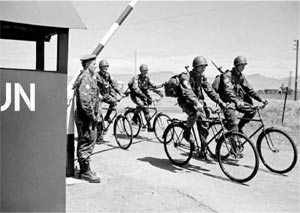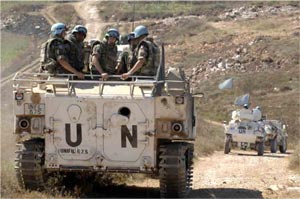|
|
|
UN peacekeeping today is a flagship enterprise of the United Nations. In scores of countries across the world where the Organization has raised its blue flag over the past 60 years, peacekeepers are the United Nations. Civilians in societies recovering from the ravages of war greet the Blue Helmets with high hopes that violence and despair will no longer rule their lives. And the soldiers, police and civilian staff serving with the United Nations arrive pledging to exert their best efforts to meet these high expectations.
The well-equipped UN troops of today bear little resemblance to the unarmed military observers deployed in the UN's first peacekeeping operation, the United Nations Truce Supervision Organization (UNTSO), deployed back in 1948. Their more robust mandates, increased integration with the civilian side, and more sophisticated military training and equipment are necessary to cope with today's complex conflicts, where civilians are, tragically, caught in the cross-fire as never before.
The growing call for UN peacekeepers has resulted in an unprecedented growth in both scope and size. As of March 2008, the UN Department of Peacekeeping Operations managed 20 peace operations composed of nearly 130,000 authorized military, police and civilian personnel - an all-time high and more than seven fold increase since 1999.

|

|
|
Finnish soldiers on a bicycle patrol in Cyprus between Nicosia and Dhekelia, a distance of 120 miles. United Nations Peacekeeping Force in Cyprus (UNFIYCP) Dhekelia, Cyprus, 1 May 1964, UN Photo/BZ, 52816
|
French peacekeepers patrolling in Southern Lebanon.
|